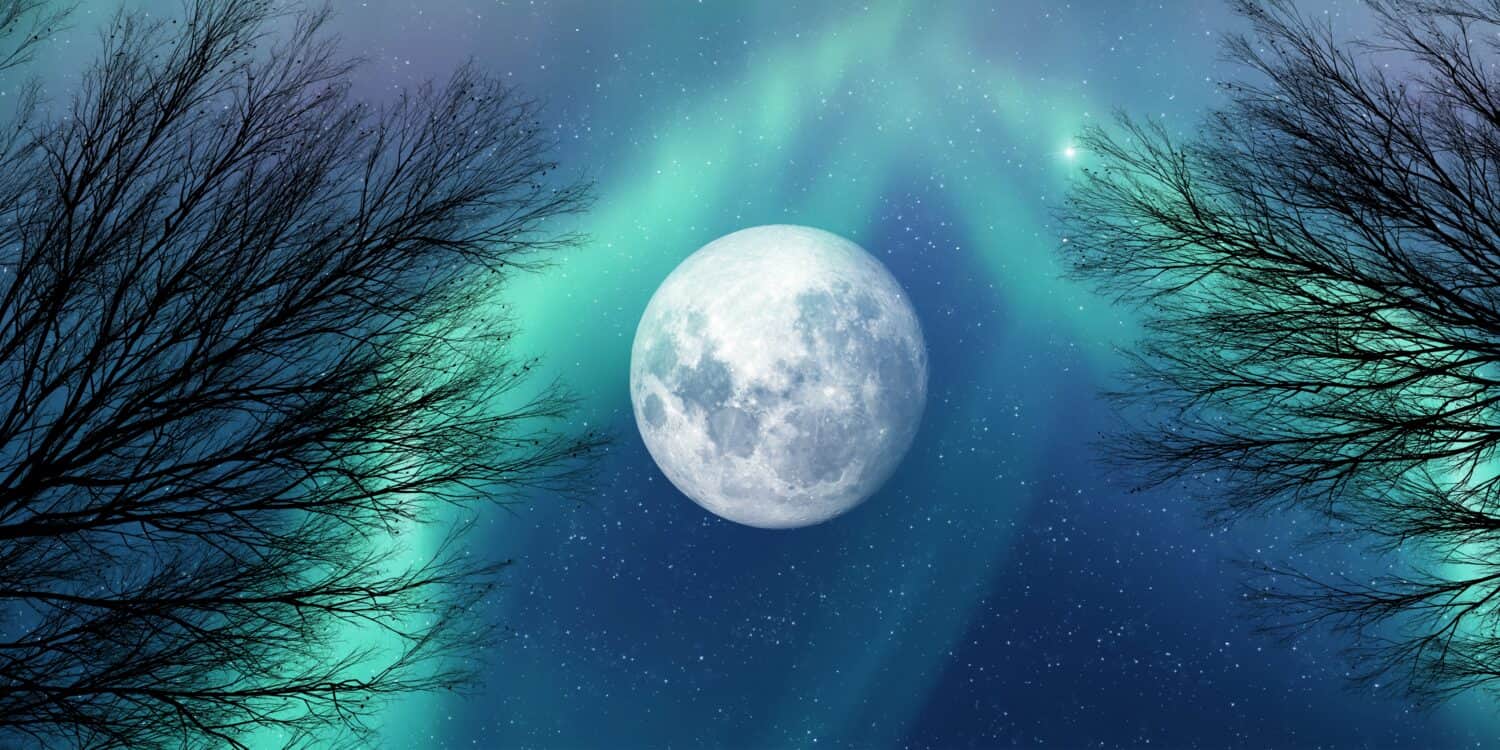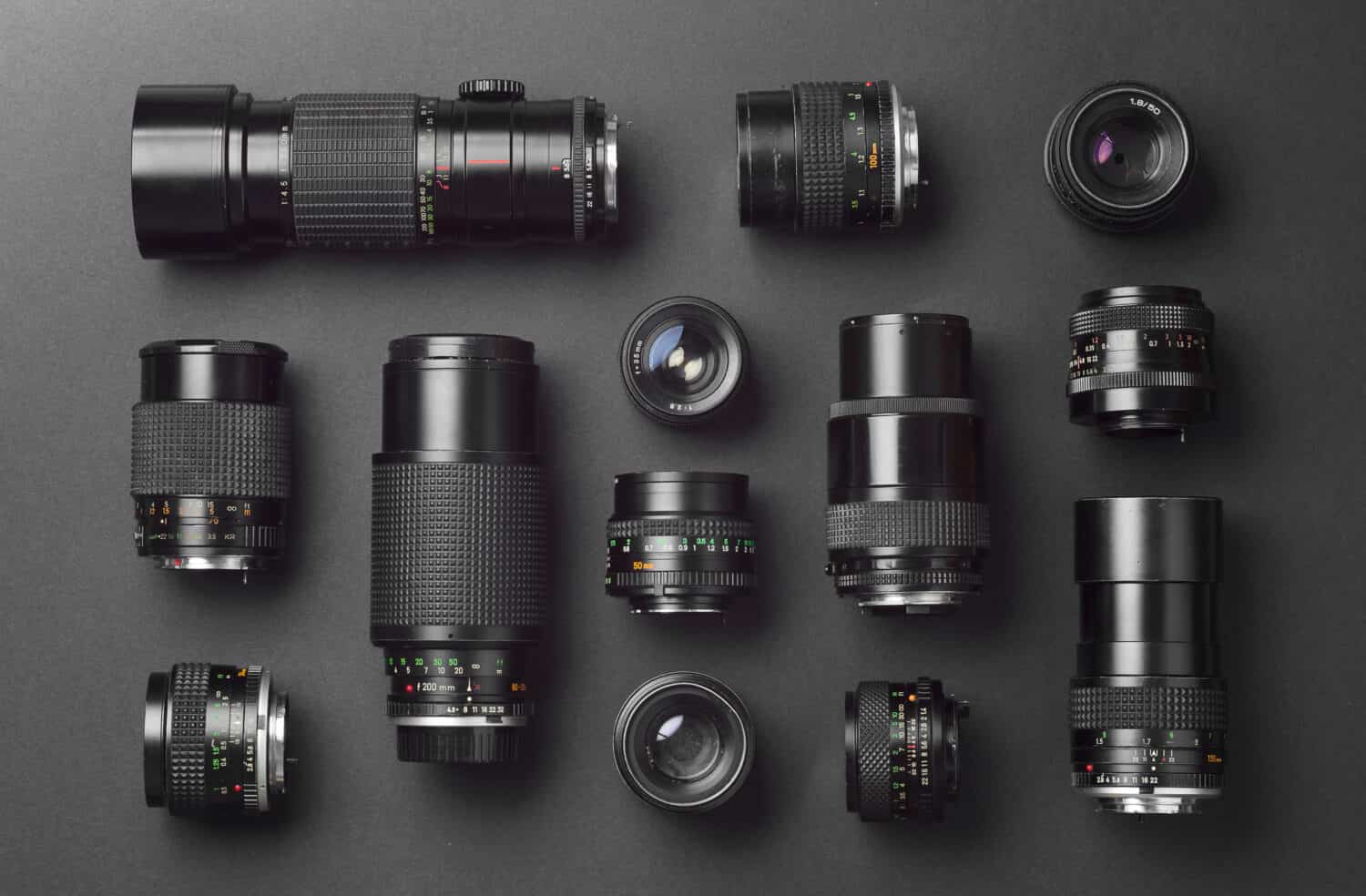Have you ever heard of a supermoon? This term is relatively new to astronomy. It’s only become popular in the past four decades. Supermoons only occur a few times yearly and appear much larger than a regular full moon. Keep reading to learn what caused the moon to appear so large in the night sky.

A supermoon appears larger than a full moon.
©Gergitek Gergi tavan/Shutterstock.com
Definition of a Supermoon
A supermoon appears brighter and bigger than the average full moon because the moon is at its nearest point to Earth during its orbit. It is only considered a supermoon when the moon is full.
This phenomenon is not uncommon. It’s been happening for centuries and will continue to occur. It is simply part of the moon’s orbit around the Earth.
It never follows a straight, circular path. Instead, the moon goes on a more elliptical path, leading to moments when it’s closest to Earth.
When the moon is closest to Earth, this is known as the point of perigee. Apogee, on the other hand, is the point when the moon is furthest from Earth. When at perigee, the moon can appear up to 14% bigger than its standard full moon.
The difference between this moon and a regular full moon isn’t huge. But folks have always enjoyed watching supermoons, which occur each year. Records of this go back a long time.
Because the moon needs to be in its full phase, which happens once a month, this amazing phenomenon only occurs a few times per year. While the size can appear almost 14% larger, it tends to be up to 30% brighter.
Popularizing the Term
In 1979, the term ‘supermoon’ was used for the first time. It was in an article for the Dell Horoscope Magazine. Richard Nolle, the article’s author, came up with the definition.
After that, the term wasn’t frequently used to describe the natural phenomena until recently. At the beginning of 2004, there was little to no use of the term. However, all that changed in 2011 as more people became interested in the beautiful large moon.
In November 2016, the world experienced the largest supermoon in 69 years. It led to even more interest in this lovely phenomenon. Also, Southeast Asia shows more interest in this natural phenomenon than other parts of the world.
Which Are Some Notable Supermoons?
The first notable supermoon took place in November 2016, as Earth experienced the largest supermoon in 69 years. On November 14, the full moon was closest to Earth.
The second notable occurrence took place in January 2019. At that time, a lunar eclipse coincided with the supermoon.
How Often Do Supermoons Occur?
The frequency of these moons varies. A full moon will occur every 29 ½ days during a complete lunar cycle. Each year, there are only three to four supermoons.
For example, from 2020 to 2025, there will only be four supermoons per year.
In 2023, the dates are:
- July 3, 2023
- August 1, 2023
- August 31, 2023
- September 29, 2023
What are the Effects of a Supermoon on Earth?
A debate continues on whether the supermoon affects the planet or not. A full moon causes higher than usual tides, known as the perigean tides. In addition, a supermoon can affect the gravitational pull. However, this effect might not be significant. There’s a need for more scientific research on the effects of the supermoon.
Which is the Best Way to View a Supermoon?
Watching supermoons has become a hobby for many moon lovers. Make sure you have the right equipment ready for the big day.
Photographing
Here are some tips on how to take the best images of a supermoon:
Lens

Get the right lens to capture amazing images of the moon.
©bogdandimages/Shutterstock.com
Make sure you invest in the right lens to capture the size of the moon. Viewing and capturing the supermoon requires focal lengths of 500mm or more. These lenses make the full moon appear more prominent in the image. The best way to capture a colossal moon is by using a teleconverter, for example, to up the focal length.
The teleconverter works to lessen the viewing angle for a long focal length. As a result, you can shoot bigger images and little of the surrounding landscape.
It’s also possible to shoot a smaller or medium-sized moon. That requires adjusting the focal length to a narrower angle of view. During such shoots, the landscape appears larger than the moon on the horizon.
Choose the Right Location
There are many beautiful places on Earth with amazing landscapes and ample space. The right location can be an area with ancient monuments or historic structures.
Earth is full of lovely and memorable landscapes with breathtaking views. Making a landscape the subject of the shoot can also be a great idea. Remember to pick a spot with ample space.
The perfect time to view or shoot a supermoon is sunset or the golden hour. It’s more visible thanks to the softer light.
Timing is Everything
The best time to view or shoot a supermoon is sunset during the golden hour. It’s more visible during this time thanks to the softer light.
Planning helps with preparation. Have a planner, note the dates of the next supermoons, and devise a plan.
The photo featured at the top of this post is © Michael Andrew Just/Shutterstock.com
Thank you for reading! Have some feedback for us? Contact the AZ Animals editorial team.







